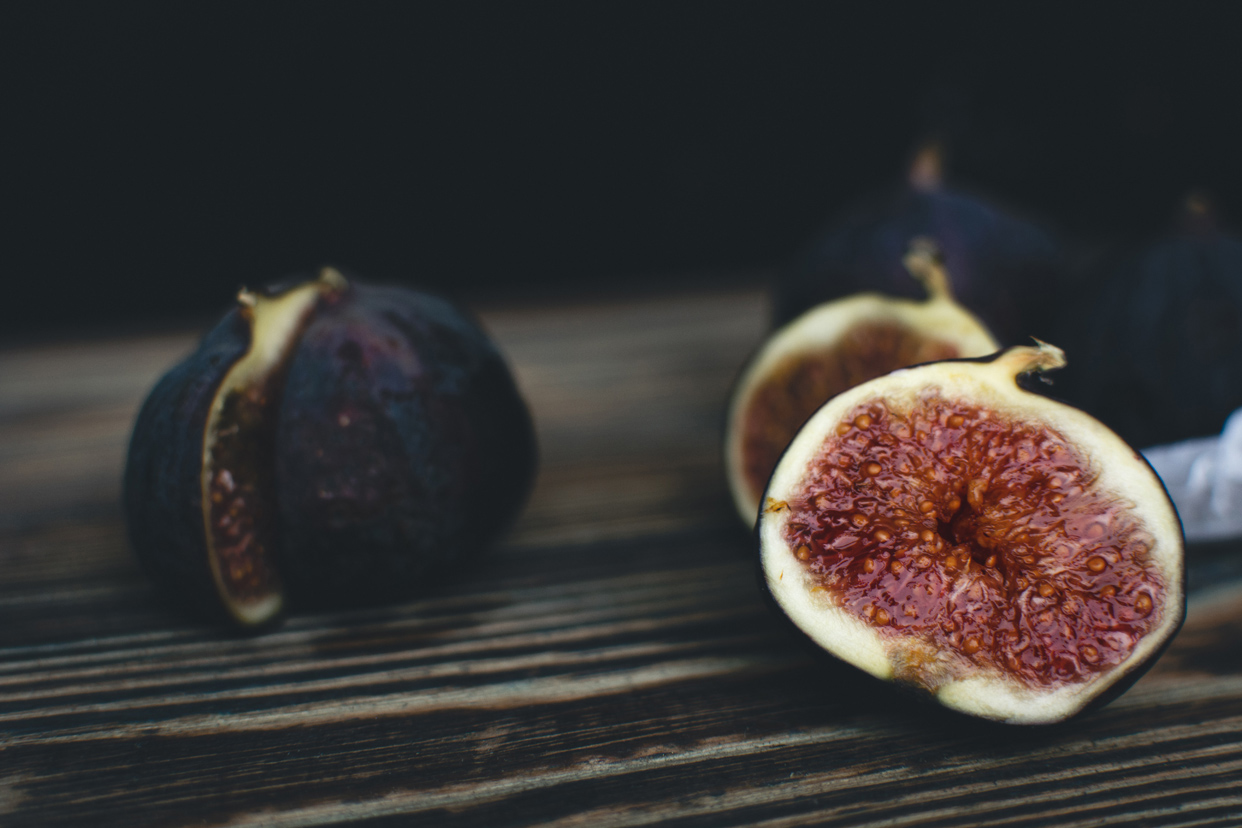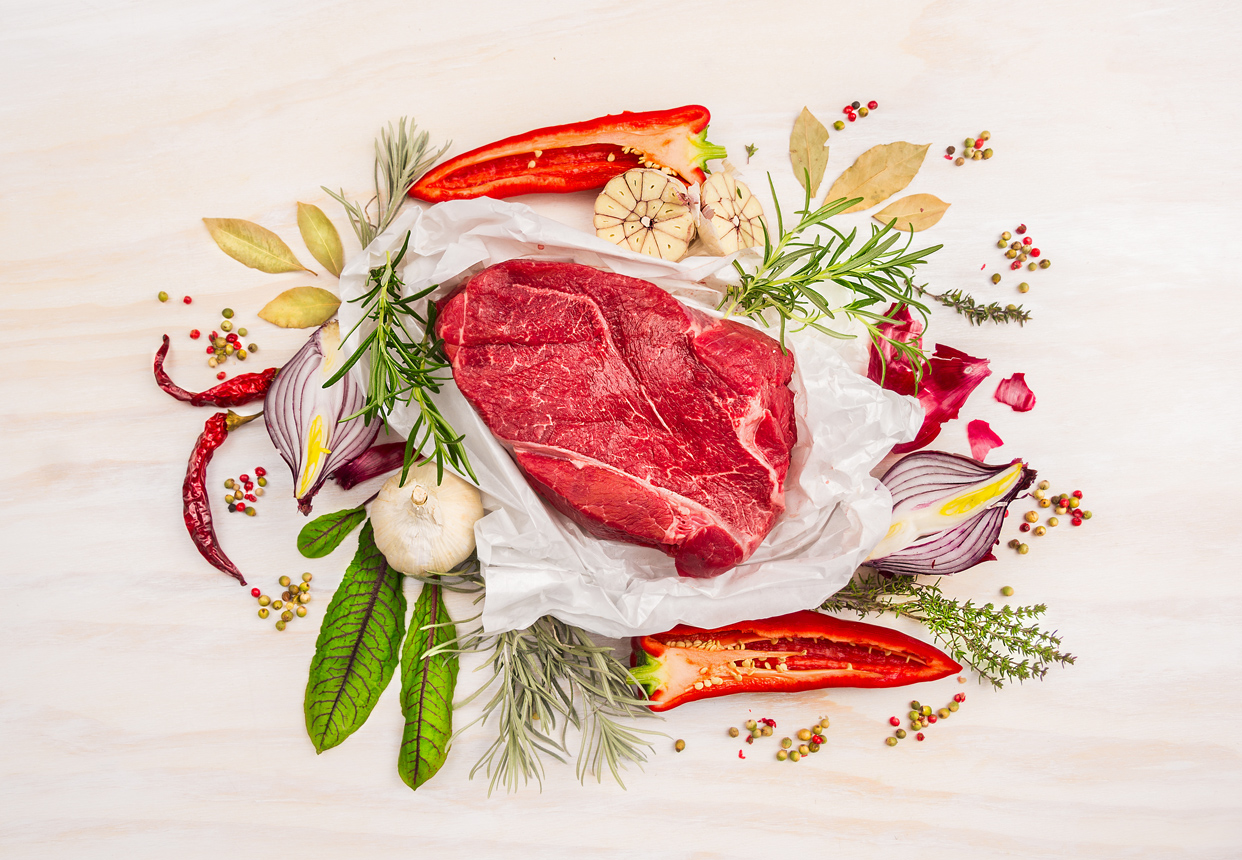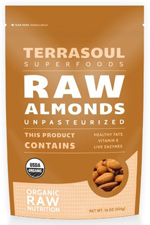Ancient Wisdom For Modern Meals: Ayurvedic Dietary Guidelines for Radiant, Lifelong Health
BY MICHELLE FONDIN
 organic fruit is an essential part of a balanced ayurvedic diet and lifestyle. photo: vicuschka photocase.com
organic fruit is an essential part of a balanced ayurvedic diet and lifestyle. photo: vicuschka photocase.com
There are a few steadfast rules about nutrition in an Ayurvedic diet and lifestyle. Most of these represent a commonsense approach to healthy eating as a whole. When I teach my Ayurvedic lifestyle course, I emphasize the 90–10 rule, which means you may implement the nutritional guidelines 90 percent of the time and allow yourself 10 percent flexibility in your daily diet.
In the beginning these guidelines may seem rigid or extreme, but they are less extreme than many of the weight-loss schemes in mainstream society, and they don’t exclude any major food groups.Once you integrate these guidelines into your daily life, it will be difficult to go back to the way you ate previously, because your body will begin to feel fantastic and you won’t want to lose that feeling. But the rules are meant to guide you back to health, not make you crazy. There’s a wise saying in Indian philosophy that states, “Infinite flexibility is the key to immortality.” So, when applying the guidelines, keep in mind that deviating from time to time is okay and may even be healthy, because with flexibility you can enjoy life more. So go ahead and eat your grandmother’s mincemeat pie, or drink that milkshake from your favorite ice cream shop. But do it with awareness and enjoyment, and don’t overdo it. Remember the 90–10 rule.
The Twelve Guidelines for an Ayurvedic Diet and Lifestyle Eating Plan
1. Eat freshly prepared foods at every meal.
2. Choose organic and locally grown produce and grains whenever available.
3. Choose only organic grass-fed dairy, eggs, poultry, and meat.
4. Eat all six tastes at every meal: sweet, sour, salty, bitter, pungent, and astringent.
5. Reduce your consumption of packaged and processed foods.
6. Choose the five sattvic, or healing, foods in their organic form whenever possible: milk, ghee, almonds, honey, fruit.
7. Let vegetables and fruit make up 50 to 60 percent of your daily food intake.
8. Eliminate unhealthy oils: hydrogenated or partially hydrogenated oils, margarine, and shortening.
9. Eliminate high-fructose corn syrup; other types of corn syrup; artificial sweeteners; bleached, enriched flour; and white, processed sugar.
10. Reduce your consumption of frozen and canned food.
11. Drink filtered, distilled, or spring water.
12. Be moderate and avoid extremes.
Ayurvedic Diet Guideline #1: Eat Freshly Prepared Foods at Every Meal
I understand that this rule may turn you upside down. American cooking has emphasized using leftovers or making meals ahead of time and freezing them. If you’re from a different culture, the concept of eating only freshly prepared foods may not seem so foreign to you.
“We’re only as healthy as the cells that make up our body.”
When we think about nourishing our bodies, we must think about optimal nutrition on all levels. We’re only as healthy as the cells that make up our body, and so we need to offer our body food that contains the most nutrients in every bite. Let me clarify that we are not talking about calories here. As Americans, we are overly focused on the number of calories when we should be focused on the quality of the calories. In order to create healthy cells, our bodies must be able to extract the nutrients — phytonutrients, vitamins, minerals, amino acids, and so on—from the food we ingest. According to Ayurvedic diet philosophy, The fresher the foods, the more of these nutrients they contain. After a food is cooked or picked, or even worse, once it’s been processed, the food begins to decompose and loses its nutritional value. Here’s my rule of thumb: eat the prepared food within twenty-four hours of making it. This requires you to cook less food and prepare it more often; but with the exception of certain curry dishes and marinated salads, fresh food tastes better anyway.
Ayurvedic Diet Guideline #2: Choose Organic and Locally Grown Produce and Grains Whenever Available
Organic fruit, vegetables, grains, and even meat can be found in most grocery stores and supermarkets today. An important component of Ayurvedic diet and nutrition is to minimize the amount of toxins entering the body and maximize the number of nutrients. Organically grown food is grown without synthetic pesticides (including herbicides) and synthetic fertilizers and is free of genetic modifications. As a consequence, organic foods are higher in antioxidants and phytonutrients and lower in toxins. Furthermore, by keeping harmful chemicals out of our soil and water supply, organic food helps to keep our earth healthy. And in general, organic food tastes better.
When it’s not possible to buy organic produce, the next best option is conventionally grown local produce. Check out a nearby farmers’ market and talk to the farmers. Ask them what their practices are regarding pesticides and synthetic fertilizers. Many farmers will say they operate a “no spray” farm but cannot receive the USDA organic label because it’s too costly for a smaller farm. This doesn’t necessarily mean these local farmers are growing organic produce, but it may be a good option when organic produce is not available. Another option for buying produce is to join a food co-op. During the spring and summer, many farms offer co-op programs where you can purchase a box of produce weekly. Depending on the program, you may be able to choose what’s in the box, and you’re guaranteed fresh produce each week. Go to localharvest.org/organic-farms to find a co-op program near you.
Ayurvedic Diet Guideline #3: Choose Only Organic Grass-Fed Dairy, Eggs, Poultry, and Meat
In addition to being fed plants treated with pesticides and grown from genetically modified seeds, feedlot animals are given antibiotics and growth hormones to maximize and speed up their growth and keep them alive. Dairy cows are given a genetically engineered hormone, rBGH, to increase milk production. And most cows, who are meant to eat grass and clover, are fed a grain-based diet. Unless you have your own cow, the best way to ensure that you’re getting the best dairy products possible is to choose grass-fed dairy products. One of the best dairy-product lines I’ve found is Natural by Nature. Find distributors of this company’s products at natural-by-nature.com. If you eat beef, you can also find grass-fed beef in organic markets.
When choosing organic eggs, make sure they are USDA certified organic. And go with the better-known brands, such as Vital Farms, Organic Valley, and Horizon Organic. Be wary of phrases on labels such as “natural,” “farm raised,” and “free range.” While these words may be enticing, they do not hold the farmer accountable with respect to organic and sustainable practices.
 dairy and meat should be organic and humanely raised when following an ayurvedic diet. photo: vicuschka photocase.com
dairy and meat should be organic and humanely raised when following an ayurvedic diet. photo: vicuschka photocase.com
Ayurvedic Diet Guideline #4: Eat All Six Tastes at Every Meal: Sweet, Sour, Salty, Bitter, Pungent, and Astringent
In Ayurveda, foods are composed of six tastes: sweet, sour, salty, bitter, pungent, and astringent. Any given food has a primary, or baseline, taste and may also have a secondary and even a tertiary taste. A good example of this is meat: the baseline taste of meat is sweet, but its secondary taste is salty. According to Ayurvedic diet philosophy, we must receive all six tastes at every meal for optimal nutrition and to minimize cravings and prevent overeating. Once you learn how to integrate the six tastes in every meal, you will see the spikes and valleys in your hunger level out.
In the audio program Magical Mind, Magical Body, Dr. Deepak Chopra points out that animals in the forest don’t have the faintest idea of what the USDA has to say about the food pyramid or of its recommendations for vitamin and mineral intake, yet they don’t have nutritional deficiencies. The only species that becomes nutritionally deficient is the human species. And we do so because we’ve completely lost touch with the inner wisdom of our bodies. As we start to heal and attune ourselves to our bodies’ needs, we begin to know exactly what they need. Have you ever finished a meal and felt dissatisfied? It may have felt that something was missing but you couldn’t put your finger on it. By getting all six tastes at every meal, you will be continually fulfilling your body’s need for specific nutrients, and so you will be less likely to overeat or eat the wrong kinds of food. This concept is unique to Ayurvedic diet philosophy and truly helps diminish and eventually eliminate cravings.
Sweet: The first taste is sweet and is found in protein, fat, and carbohydrates. In the West when we think of the sweet taste, we generally associate it with sugary products like candy and ice cream. In Ayurveda, meat, oils, and butter are sweet. Milk, too, is sweet, as are cereals, other grains, and sweet fruit.
Sour: The second taste is sour and is the taste of citrus fruits and fermented foods and drinks, such as yogurt, sour cream, cheese, vinegar, and alcohol.
Salty: The third taste on our list, salty, presumably doesn’t require further explanation; it is easy to receive in food.
Bitter: The fourth taste is bitter and is most often found in leafy greens or vegetables.
Pungent: The fifth taste, pungent, is the taste of spice or peppery heat. Pungency is found in such foods as spices, hot peppers, garlic, onions, and ginger.
Astringent: The sixth taste, astringent, is not a true taste but nonetheless must be included. Foods that possess astringent taste have a peculiar flavor and have a compacting and drying effect on the body. Some examples are beans, lentils, and pulses but also green tea, spinach, and cranberries. If you’ve ever had a cup of pure green tea without anything added to it, you have experienced a dry taste in your mouth. That is the effect of astringency.
Since only a small quantity of foods with bitter, pungent, or astringent tastes is necessary to satisfy our requirements, it’s relatively easy to include them in your daily diet. For example, a couple of dashes of pepper will add the pungency, while a small amount of raw spinach in a salad will give you the bitter and astringent tastes.
“The only species that becomes nutritionally deficient is the human species. And we do so because we’ve completely lost touch with the inner wisdom of our bodies.”
Below is a list of common foods in each taste category. This list is a guide and, while it doesn’t include every food, it can help you determine which foods you can eat more of to help you balance your Ayurvedic dosha. Keep in mind that most foods have a dominant taste but also a secondary taste. Some foods have more than two tastes. For example, apples’ primary taste is sweet, and their secondary taste is astringent. When filling your plate, try to include foods from each of the six taste categories.
Sample Ayurvedic Meals That Include All Six TastesVata-pacifying breakfast: Cream of wheat with milk (sweet) made with a pinch of salt (salty), sweetened with maple syrup (sweet), and topped with berries or cherries (sour) and a dash of cinnamon and nutmeg (pungent). Accompany this with a cup of green tea (bitter and astringent).
Pitta-pacifying lunch: A spinach salad (bitter and astringent) with sliced avocados (astringent and sweet), sunflower seeds (sweet), olive oil (sweet), vinegar (sour), salt and pepper (salty and pungent), sprouts (astringent), and cucumbers (sweet and astringent).
Kapha-pacifying dinner: Stir-fried tofu (astringent and sweet) with broccoli (bitter and astringent), garlic (pungent), celery (salty and astringent), pineapple (sour and sweet), kale (bitter), sesame oil (sweet and astringent), brown rice (sweet), and soy sauce (salty).
Ayurvedic Diet Guideline #5: Reduce Your Consumption of Packaged and Processed Foods
If you must use processed foods, observe the following:
+ Choose packaged products labeled “USDA Organic.”
+ Choose products with no more than six ingredients listed on the label; and you must know what the ingredients are and what food source they come from.
Ayurvedic Diet Guideline #6: Choose the Five Sattvic, or Healing, Foods in Their Organic Form Whenever Possible: Milk, Ghee, Almonds, Honey, Fruit
There are a few exceptions to this rule. Kapha types and those who are on Kapha-pacifying diets must minimize their consumption of milk, ghee, and honey. Diabetics need to closely monitor their consumption of honey and fruit owing to the high sugar content. Milk is revered in Ayurvedic diet philosophy as a complete food. It should be brought to the boiling point first and then cooled slightly before drinking. Warmed milk combined with a teaspoon of ghee has a mild laxative effect and can be used to treat constipation or sluggish bowels. Warm milk with cardamom, nutmeg, and a teaspoon of sugar can induce sleep when taken in the evening. If you are calcium deficient or are at risk for osteoporosis, soak ten almonds overnight and peel and eat them in the morning.
Conscious Lifestyle Recommends the Following Sattvic Foods:
 Organic Grass-fed Ghee
Organic Grass-fed Ghee
This ultra-high quality, organic, ghee made is made from the fresh milk of grass-fed, pasture raised cows and is revered for its healing, ojas increasing and consciousness expanding effects in Ayurvedic medicine. Absolutely delicious and lactose-free, this ghee is a powerful sattvic, harmonizing addition to your Ayurvedic diet.
 Terrasoul Truly Raw, Unpasteurized Organic Almonds
Terrasoul Truly Raw, Unpasteurized Organic Almonds
These highly sattvic almonds are truly raw and alive. Sourced from organic farms in Valencia, Spain, they are never treated with irradiation, ultra high heat, steam or chemically sterilized which is required for all US grown almonds, even those labeled as “raw”! These are absolutely straight from the tree and earth, just like nature intended—highly sattvic and perfect for an Ayurvedic diet.
 Organic Raw Unprocessed Honey
Organic Raw Unprocessed Honey
This is ultra-high quality honey just like nature intended—raw, unheated, unfiltered and organic. Unfiltered honey has small amounts of naturally occurring superfoods like propolis, bee pollen and royal jelly in addition to the medicinally active, delicious honey itself. Most other honeys are filtered which removes these health and longevity boosting compounds. A sattvic, Ayurvedic superfood of the highest calibre.
Ayurvedic Diet Guideline #7: Let Vegetables and Fruit Make Up 50 to 60 Percent of Your Daily Food Intake
Ayurvedic medicine presupposes a vegetarian diet. However, if this is not desirable or possible, strive to make vegetables and fruits at least 50 percent of your daily food intake. This is necessary because these are water-rich foods, and our bodies are 50 to 65 percent water and our brains are 85 percent water. By eating water-rich foods, you are sure to get enough water in your body; most people don’t consume enough water to stay hydrated. The second reason is that phytonutrients, which protect us from cancer, heart disease, and premature aging, are found only in plants. Third, antioxidants, or free-radical scavengers, which help repair damaged cells and prevent cancer growth, are found mostly in plant-based foods.
Ayurvedic Diet Guideline #8: Eliminate Unhealthy Oils: Hydrogenated or Partially Hydrogenated Oils, Margarine, and Shortening
Favor organic olive oil, canola oil, sesame oil, and butter in your diet, because they are higher-quality oils and fats. During the fat-free craze that began in the 1980s, butter was given a bad rap. Organic butter is a saturated fat but is okay to eat in moderation and certainly better to eat than chemically prepared butter substitutes.
Ayurvedic Diet Guideline #9: Eliminate High-Fructose Corn Syrup; Other Types of Corn Syrup; Artificial Sweeteners; Bleached, Enriched Flour; and White, Processed Sugar
Because of our genetic blueprints passed down from our ancestors, our bodies are hardwired to recognize natural foods and know what to do with them. High-fructose corn syrup was developed in 1967, and our bodies have hardly had time to adjust to this product and learn what to do with it. Chemically engineered artificial sweeteners are known to cause a spike in insulin levels, which may tire out the pancreas. Bleached, enriched flour is actually stripped of its nutritional value: the germ and outer bran layers are removed and the wheat is then bleached with oxide of nitrogen, chlorine, chloride, nitrosyl, and benzoyl peroxide mixed with various chemical salts. Using this flour means that you not only consume something devoid of nutrients but also ingest residual chemicals. Instead of eating any of these products, choose organic, unbleached, un-bromated flour and organic turbinado sugar, organic sugar, organic brown sugar, organic honey, and organic grade A maple syrup.
 fresh food has higher levels of ‘prana’ or ‘life energy’ according to ayurvedic diet philosophy. photo: vicuschka photocase.com
fresh food has higher levels of ‘prana’ or ‘life energy’ according to ayurvedic diet philosophy. photo: vicuschka photocase.com
Ayurvedic Diet Guideline #10: Reduce Your Consumption of Frozen and Canned Food
When the variety of fresh produce is limited at certain times of the year, is frozen produce better? When it comes to nutrients, time is of the essence. The longer a plant-based food has been out of the ground, or the longer an animal-based food has been dead, the fewer nutrients it contains. There is a principle in Ayurveda called prana, or “life force and vitality.” A living thing has prana unless it has been altered by chemicals, laden with toxins, or deprived of sunlight and water. The same prana in a living entity is given to us in food. As soon as a plant is pulled from the earth or an animal is slaughtered for meat, it begins to lose its prana and continues to lose it as the days go by. Food that has been frozen is literally prana frozen in time, but eventually that food loses its prana. How much prana is present in frozen food depends on the length of time it has been frozen. Most canned food has been preserved in water or some other liquid, and the nutrients leak into the liquid while the can sits on the shelf. And since most of us throw away the liquid surrounding the food, we toss out the nutrients as well. As a rule of thumb, if your food hasn’t seen sunlight in a while, it’s best to reduce your consumption of that food or eliminate it from your diet altogether.
Ayurvedic Diet Guideline #11: Drink Filtered, Distilled, or Spring Water
Water is, without a doubt, the most important thing we put into our bodies. Given that our bodies are about two-thirds water and our brains are over 80 percent water, it’s no wonder we feel cranky when we’re even slightly dehydrated. The minimum amount of water you should drink daily is eight eight-ounce glasses. It’s best not to count beverages such as tea, coffee, or soda as part of that amount. They have a diuretic effect on the body, causing you to urinate more frequently and, in doing so, lose water more rapidly than normal. People with a larger body mass, and athletic people, may need additional water.
Ideally, drink half your body weight in ounces. For example, if you weigh 140 pounds, then strive to drink 70 ounces of water. If taste is an issue, add a few drops of fresh lemon or lime juice or a few tablespoons of other natural juice to the water. Many clients tell me they forget to drink water. My advice is to fill a container with the amount of water you need to drink for the day and take it from there.
“Water is, without a doubt, the most important thing we put into our bodies.”
Water quality is extremely important. Most tap water is heavily chlorinated or has other chemicals meant to keep it free of microorganisms. Distilled water is likely to be the safest. Spring water would be a good choice too. Filtered water may improve taste, but not all filters remove contaminants.
Ayurvedic Diet Guideline #12: Be Moderate and Avoid Extremes
Remember the 90–10 rule: implement the nutritional guidelines 90 percent of the time and allow yourself 10 percent flexibility. My dear teacher Dr. David Simon often said, “If you say ‘do not’ or ‘cannot’ too many times, it will tie you in knots.” Follow the guidelines most of the time, and they will become a part of who you are. But don’t go crazy. Eat ice cream once in a while; have a frozen pizza. Just don’t let that become the norm.
Guidelines for Re-creating the Mind-Body Connection with Food
Awareness comes on all levels. Food awareness is important in reconnecting the body-mind. If you’ve ever tried to feed a young child, you know that it’s a struggle to get him to eat when he’s not hungry. Certain food, situations, emotions, environments, or circumstances can create a disconnect between the body and the mind and soul when it comes to eating. The reason that so many people struggle with eating is that, while it’s a necessary act for survival, it is also tied to our upbringing, emotions, and relationships. Perhaps for you, food, in the past, meant a loving gesture from someone in a loving relationship with you. Or maybe not eating was a way for you to protest rules set by a parent or authority figure, by going on a “food strike.” Or maybe you experienced food, or lack of it, as a source of punishment.
Through eating awareness we can disarm an emotional or Pavlovian response, by letting go of the triggers and tuning in to our bodies for signals of comfort and discomfort. The shift that must take place is a shift from eating to live, or survive, to nourishing the temple that houses our soul. Eating is a pleasurable, sacred act. It should be respected and revered. In the previous chapter, we discussed dharma. How can you live out your dharma if you’re feeling lousy all the time because of the food you’re consuming or how you’re consuming it? Believing with all your heart that food is medicine will change the way you approach food altogether. You will no longer be imprisoned by the food itself, food commercials, and artificial products on grocery shelves. Instead you’ll be looking for ways to optimize your energy level with proper food intake.
Ten Ayurvedic Guidelines for Eating Awareness
1. Eat only when you’re hungry. This may seem like a no-brainer, but how many times have you eaten only because you looked at the clock and noticed that it was coffee time, snack time, or lunchtime? A good exercise is to put your hand over your stomach, close your eyes, and feel if there’s any undigested food left in there. You might feel a slight sense of fullness. Or you might also feel a little indigestion; or if you burp, you can taste undigested food. That’s a good indicator of an undigested meal. Another way to decide if you really need more food is to keep track of when you last put anything in your mouth besides water. For Vata types, two to four hours should go by before they eat again. Pitta types should wait three to five hours between meals, and Kapha types should wait four to six before eating again.
2. Eat in a calm environment. Your body should not be agitated from extreme noise, blaring lights, or a heated debate when you’re eating. You also should refrain from watching TV, listening to the radio, browsing the Internet, texting, and talking on the phone. You can’t remain aware when you are distracted.
3. Put down your fork between bites. Enjoyment from eating comes from pacing yourself. You can’t enjoy your food if you’re shoveling it in. You’re not a garbage disposal. I can assure you: no one is going to take your food away from you.
4. Eat two cupped handfuls of food at a meal. You would be surprised how effective portion control is at making it possible for you to lose weight, maintain weight, or feel comfortable after a meal. To measure how much two cupped handfuls is for you, start with a dry substance such as uncooked rice. Fill a bowl with the rice, and set an empty bowl nearby. Using both hands together, scoop up enough rice to fill your hands, and place it in the empty bowl. Do that twice. Then, using a measuring cup, measure the amount of rice you put in the second bowl. Most people will find they’ve scooped out about two or three cups of rice.
5. Stop eating when you’re satisfied but not full. When you’re satisfied, you usually sigh once. You look at your plate and say, “That was good.” If your plate is still half full, have someone take it away, or put the leftover food in a container, or throw it away instantly. You may have no clue what “satisfied” feels like because you’ve always eaten until you’re full. But with practice you will regain the ability to detect your body’s signals of satisfaction.
6. Do not eat if you aren’t enjoying your food. Please, for your health, respect this guideline. I have fallen into the trap of eating bad food, and I imagine you have too. Just because the food is in front of you, you eat it — even if it’s poor quality, too greasy, too fatty, or just plain disgusting. Maybe you have a fear of wasting food, or apathy has crept in. Whatever the reason, remember that the energy that comes from the food will be nourishing your body and your cells. If the food isn’t appealing to you, your cells won’t like it either.
7. Sit down to eat at a table with a pleasant setting. Please do not eat while sitting in your car, standing in your kitchen, or walking around a park or mall. Sit down and be mindful of what you’re doing. Clear out your eating space. Remove papers, books, computers, mail, and bills before sitting down to your meal. Put some fresh flowers or candles and a nice place mat or tablecloth on the table. Again, it’s impossible to extract all the good healing chemicals of a fresh meal if you’re staring at a Visa bill for five thousand dollars lying on the table.
8. Drink only water at meals, in small amounts. Drinking large amounts of anything dilutes the gastric juices and makes digestion difficult for your body. The water should be at room temperature; take only small sips throughout the meal. Any other beverage should be consumed outside of meals.
9. Do not eat when you’re upset. Eating a pint of Ben and Jerry’s Chubby Hubby is not going to heal your relationship with your spouse, and finishing off a cheesecake will not make your mother stop telling you what to do. It’s also true that skipping a meal because of an emotional upset will not kill you. You likely have some reserved energy in your body that will make up for that one meal. But eating while upset can create a host of digestive issues and may make you sick. Just sip warm water until you’ve calmed down or feel genuinely hungry again.
10. Feel gratitude for the food you have. Give thanks to the Creator, in whichever way you conceive it, to the cook, to the waitress or waiter, or to anyone else involved in preparing and serving your food. Even if you don’t see them directly, have gratitude in your heart. This sense of gratitude will allow the best digestion and assimilation of nutrients possible.
Eating for Your Ayurvedic Mind-Body Type
If you do nothing else but apply the Twelve Guidelines for an Ayurvedic Diet and Lifestyle Eating Plan and the Ten Ayurvedic Guidelines for Eating Awareness, you will see your health improve markedly. But if you’d like to learn how to eat for your mind-body type, be sure to read the following pages, where I outline some simple steps to take.
Don’t Know Your Ayurvedic Dosha?
Take the Chopra Center Ayurvedic Dosha test and find out now
[/impact_text]
A dosha-specific Ayurvedic diet is the most effective diet to follow when you detect that your body is out of balance or out of sorts. Once you begin getting back in tune with your body, you’ll notice when imbalances start to occur. You may first notice a general sense of fatigue. If you’re a Vata type, you may notice dry skin, dry eyes, restlessness, trouble sleeping, or more worry than usual. Typical Vata imbalances also include constipation and excess gas. A Pitta type may notice a bit more irritability when going out of balance. She may experience high acidity, acid reflux, or oversensitivity to spicy or sour foods. An out-of-balance Pitta can also experience skin rashes or acne. A Kapha type will eat more than usual and notice some weight gain or feel heavy and lethargic. Nasal congestion, excess mucus, and complacency are all symptoms of an out-of-balance Kapha.
“Once you begin getting back in tune with your body, you’ll notice when imbalances start to occur.”
When you go out of balance, the dosha that is specifically out of balance starts to increase in the body. Since you don’t need more of what you already have, increasing the dosha will make you feel a sense of discomfort. For example, a Kapha type already has a fair amount of the water and earth elements in his mind-body constitution. Let’s suppose that a Kapha has been eating a lot over the holidays (increased earth), has been snowed in and forced to stay indoors for a few days (increased earth and water from the weather and inertia), and has now caught a cold, which causes chest and nasal congestion (increased water). The heaviness of the food, the inertia of remaining indoors, and the increased mucus all cause Kapha to increase in the body. To counteract the increased Kapha, this person would do well to follow a Kapha-type diet to decrease Kapha.
Remember: You don’t need more of what you already have naturally.
Try a dosha-specific Ayurvedic diet for your dominant dosha for three to five days, and notice if you experience improvement. In addition to following the diet, drink a dosha-specific herbal tea in between meals. Remember, you are not eliminating the other tastes; you are increasing the tastes that balance your dosha and reducing the tastes that can aggravate your Ayurvedic dosha.
The question on this subject that generally arises is: “If I have two dominant doshas, which diet do I follow?” As a general rule, follow the dosha-specific diet that corresponds to the stronger dosha. However, if you find that your symptoms reflect the second-most dominant dosha, follow that diet instead. For example, if your prakruti is Vata-Pitta, follow a Vata-pacifying or -specific diet. But if you’re experiencing acid reflux, loose stools, and your skin is warm to the touch, you have excess Pitta and should follow a Pitta-pacifying diet instead. Another easy way to decide is to take the season into consideration. In Pitta season (summer), for example, follow a Pitta-specific diet. In Vata season (fall–early winter), follow a Vata-specific diet.
“We’re only as healthy as the cells that make up our body.”
It may seem like a great balancing act (no pun intended), and it is. Because of the food we eat, the liquids we drink, the experiences we have, and the emotions we process, we are in constant flux between balance and imbalance. It’s not an exact science, however. But now that you’re aware of your natural state of being (prakruti) and what it feels like to go out of balance (vikruti), you have the tools to keep the pendulum from swinging too far in one direction or the other.
If we examine the five great elements and the six tastes, we can see how each corresponds to an increase or decrease in the elements in our mind-body constitution:
Space (akasha): increased by the bitter and astringent tastes.
Air (vayu): increased by the bitter, pungent, and astringent tastes.
Fire (tejas): increased by the pungent taste.
Water (jala): increased by the salty and sour tastes.
Earth (prithivi): increased by the sweet taste.
Vata Diet Guidelines
Since Vata is composed of space and air, a Vata diet will contain mainly foods that have a good amount of water and earth (the qualities opposite of space and air). Here’s what to do:
Increase: sweet, sour, salty
Decrease: bitter, pungent, astringent
First of all, to counteract the already light and cold Vata dosha, Vata types must eat warm, heavy, oily, and sweet foods. To give some examples, home-cooked foods such as stews, casseroles, pasta dishes, hot apple pie, bread pudding, and hot bread with olive oil are all Vata pacifying. Vata types can eat cold foods, but only in very warm weather. Vatas respond best to cooked vegetables rather than raw; warmed 2 percent or whole milk rather than skim milk; and sweet fruit such as mangoes, ripe bananas, and pears. The three tastes that Vata types should focus on are the sweet, sour, and salty tastes, and Vatas should eat smaller quantities of bitter, pungent, and astringent foods.
Pitta Diet Guidelines
Remember that Pitta is made up of fire and water. Pitta types need to stay cool and reduce some of the water. The best type of foods for Pittas are cooling foods with sweet, bitter, and astringent tastes:
Increase: sweet, bitter, astringent
Decrease: sour, salty, pungent
Unlike Vata types, Pittas do well with salads and colder foods all year long. Pittas can eat raw veggies and beans, lentils, and sprouts. Often Pitta types do best with a vegetarian diet. Since their appetites are good and sometimes ravenous, Pittas need to be careful about not overeating, even when they eat the right foods. To regain balance or remain in balance, a person with a Pitta constitution should steer clear of spicy and greasy foods, minimize red meat intake, and avoid alcohol consumption. A Pitta should also minimize additional salt intake.Kapha Diet Guidelines
Since Kapha is composed of water and earth, Kapha types need more space and air or lighter qualities. This means they need a diet that is the opposite of a Vata diet:
Increase: bitter, pungent, astringent
Decrease: sweet, sour, salty
Kapha is a cold dosha like Vata, but Kapha types generally do well with raw vegetables and salads as long as they’re not ice cold. The bitter, pungent, and astringent tastes help balance Kaphas, who should reduce their consumption of the sweet, sour, and salty tastes. Kapha diet type food examples include spicy hummus, lentil soup, stir-fried green vegetables and tofu, leafy green salads, lean fish, vegetable burritos, berry fruit salads, and almonds. Spice should be added whenever possible to jump-start the Kapha metabolism, and small amounts of caffeinated coffee or tea are completely acceptable to help boost a Kapha person’s energy level. To rebalance themselves, Kaphas should eat breakfast later in the morning or skip breakfast altogether. Kapha diet types need two decent-sized meals or one small and two medium-sized meals, with no snacking in between.
Exercise: Your Ayurvedic Dosha-Specific Eating Plan
Using the guidelines about dosha-specific eating above and the six tastes and the sample meals listed earlier in the article, create a plan for one day’s meals according to your dominant dosha. If you are a two-dosha type, you may need a plan for both doshas depending on the season. You will generally eat for your dominant dosha in three seasons and follow the Ayurvedic diet for your secondary dosha in the appropriate season for that dosha. The seasons are generally split as follows, but they may vary according to geographical location: Kapha season is late winter to spring, Pitta season is summer, and Vata season is fall to early winter. Make sure you include all six tastes at every meal: breakfast, lunch, snack, dinner.
Feeding the Temple That Houses Your Soul
Ayurveda teaches us that there is energy in everything. This energy, called prana, or vital life force, exists everywhere. It is my wish for you to experience a shift in awareness when it comes to food and feeding your body, mind, and soul. Consider the idea that prana exists not only in your food, water, and drink but also in the energy you put into preparing your food. Have you ever eaten a dish prepared with love? It could be a cake or soup your grandmother always prepared or that homecoming meal your mom makes for you each time you visit her. Doesn’t that food taste and feel so much better than when you prepare it?
Eating is a sacred act we all must participate in at least a few times a day. Strive to find the joy in shopping for food, preparing food, and enjoying it. The love, joy, and happiness you feel will bring you the energy in it. When you prepare food for your family, cook with love. On a similar note, the food that nourishes this body that houses your soul should never be referred to as just “calories.” You are not simply “filling the tank.” You are creating prana. You are creating vital energy, which will give you joy to carry with you throughout your day. So many of us complain that we don’t have energy, that we’re tired most of the time. This is where energy starts. Feed your body properly, add mindfulness to your eating, and consider it a sacred act. Then, and only then, will you start to heal the physical body.
This article on ayurvedic diet is excerpted from the book The Wheel of Healing with Ayurveda © 2015 by Michelle S. Fondin. Printed with permission of New World Library. newworldlibrary.com
About The Author
Michelle S. Fondin is the author of The Wheel of Healing with Ayurveda. She holds a Vedic Master Certificate from the Chopra Center and is a member of the National Ayurvedic Medical Association and Yoga Alliance. She treats clients at her Ayurvedic Path center, speaks and offers workshops, and lives in Herndon, Virginia. Visit her online at michellefondin.com.























